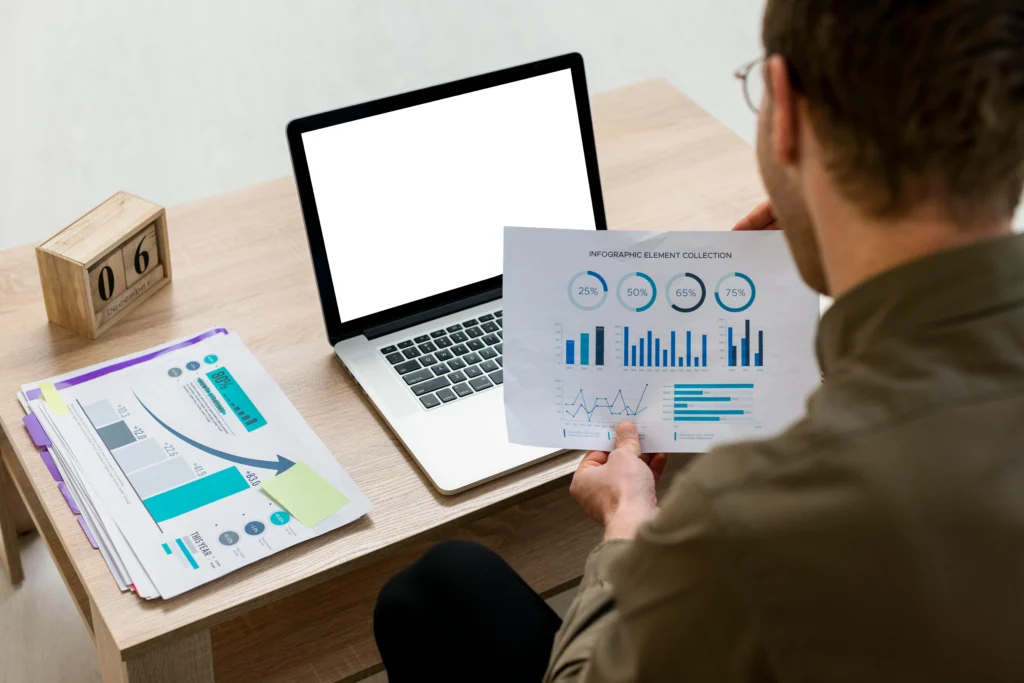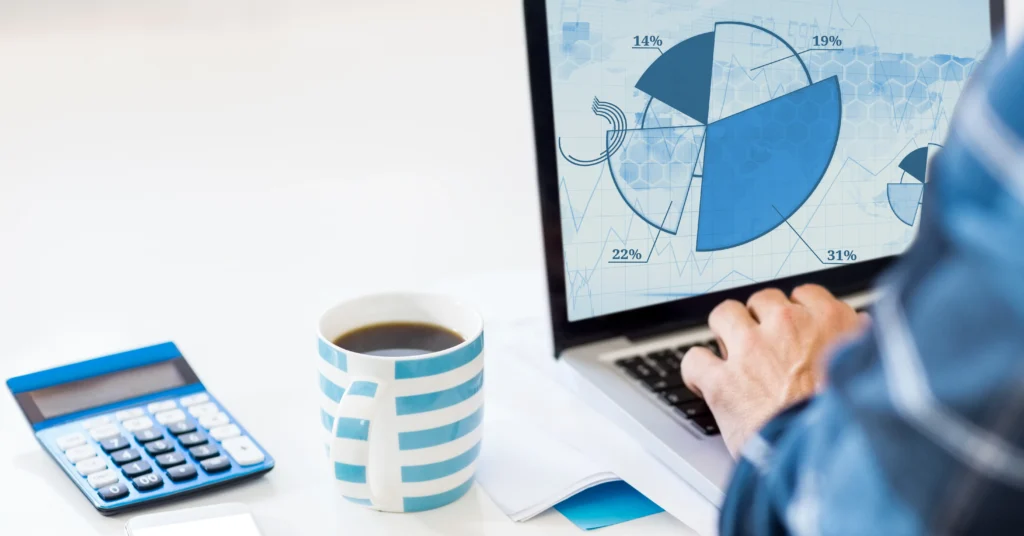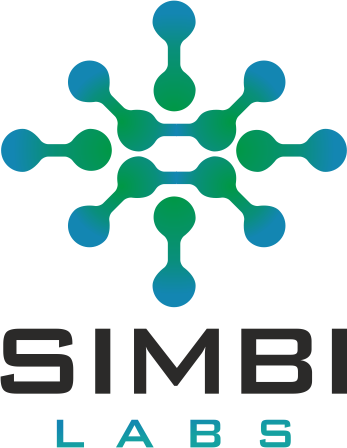“Learn, Analyze, Interpret: A Roadmap to Statistical Fluency”

Introduction:
In today’s data-driven world, understanding and interpreting data is no longer a niche skill but a fundamental requirement across almost all industries. Statistical data analysis helps us extract meaningful insights from raw numbers, enabling informed decision-making, pattern recognition, and prediction. In this blog, we’ll explore key concepts and practical tips that will guide you on your journey to mastering statistical data analysis, covering foundational knowledge, essential techniques, and how to apply them effectively in real-world scenarios.
Learning statistical data analysis is a journey that blends both theoretical knowledge and hands-on experience. It involves mastering foundational concepts in statistics, such as descriptive statistics and probability, while also gaining practical skills in data collection, cleaning, and visualization. By exploring advanced topics like hypothesis testing, regression analysis, and statistical modeling, you can unlock the ability to analyze and interpret data effectively, enabling you to make informed, data-driven decisions.
This blog provides a clear roadmap for learning statistical data analysis, broken into simple yet powerful steps. Let’s explore them.
1. Understanding the basics of Statistics:
Definition: This is your foundational step in learning data analysis. It involves grasping core statistical concepts such as populations (the entire group you’re interested in), samples (a subset of the population you actually collect data from), different types of variables (e.g., categorical vs. numerical), and the fundamental distinction between descriptive statistics (summarizing data) and inferential statistics (making predictions or generalizations).
Practical Tips:
- Start with introductory statistics courses or textbooks that focus on conceptual understanding rather than just formulas.
- Familiarize yourself with key statistical vocabulary like mean, median, mode, variance, and standard deviation.
- Always try to understand the ‘why’ behind each concept: why is a sample needed? Why do we use different measures of central tendency?
Merits:
- Lays the Groundwork: Establishes a strong foundation for all subsequent, more advanced statistical topics.
- Prevents Misinterpretation: Helps you correctly understand what statistical results actually mean.
- Builds Analytical Mindset: Develops critical thinking skills necessary for data interpretation.
- Guides Initial Steps: Equips you to correctly frame research questions and understand data context.
- Enhances Learning Curve: Makes learning complex models much smoother when the basics are solid.
Demerits:
- Can Be Abstract: Initially, concepts might feel theoretical and detached from real-world applications.
- Requires Discipline: Demands consistent effort to grasp foundational principles.
- Risk of Oversimplification: Focus on basics might tempt you to overlook nuances in complex scenarios.
- Tedious Without Application: Can become boring if not immediately followed by practical exercises.
- Initial Barrier: Might feel overwhelming at the beginning due to new terminology and ideas.
Real Life Examples:
Imagine you’re trying to understand the average income of all adults in your country (population). It’s impractical to survey everyone, so you select a group of 1000 adults (sample). Understanding these basics helps you realize that the average income of your sample is an estimate of the population’s average income, and there will be some uncertainty involved.
- In a school, the average marks of students (mean) help identify overall performance. The standard deviation tells whether most students scored close to the average or very differently.
- Insurance companies use probability to decide your premium. If you’re statistically more likely to file a claim, your premium is higher.
2. Learn Data collection and cleaning:
Definition: This crucial stage involves the systematic process of acquiring raw data and then meticulously preparing it for analysis. Data cleaning is about identifying and rectifying errors, inconsistencies, missing values, and irrelevant information that can skew your results. It’s often the most time-consuming, yet vital, part of any data analysis project.
Practical Tips:
- Understand different data collection methods (e.g., surveys, web scraping, sensor data, databases) and their implications for data quality.
- Master techniques for handling missing data, such as imputation (filling in missing values) or deletion, understanding when each is appropriate.
- Learn to identify and rectify outliers (extreme values) that can disproportionately affect analyses like the mean.
- Practice standardizing data formats, ensuring consistency (e.g., “California” vs. “CA”).
- Utilize tools like Excel, Python’s pandas library, or R’s
dplyrpackage for efficient data manipulation and cleaning.
Merits:
- Ensures Data Quality: Guarantees the accuracy and reliability of your raw data.
- Prevents Misleading Results: Clean data leads to trustworthy and valid analytical outcomes.
- Boosts Efficiency: Streamlines subsequent analysis by providing a ready-to-use dataset.
- Develops Problem-Solving Skills: Equips you to tackle messy, real-world data challenges.
- Builds Trust: Provides confidence in your analytical findings and recommendations.
Demerits:
- Time-Consuming: Can account for a significant portion of project time, especially with large or messy datasets.
- Requires Attention to Detail: Small errors in cleaning can lead to big problems in analysis.
- Needs Domain Expertise: Sometimes requires understanding the context of the data to correctly identify issues.
- Risk of Bias: Improper handling of missing data or outliers can inadvertently introduce bias.
- Can Be Repetitive: The process can feel tedious, especially for repetitive tasks.
Real Life Example:
Imagine you collected customer survey data, and some respondents left the “Age” field blank, while others entered “twenty-five” instead of “25.” Data cleaning would involve deciding how to handle the blank fields (e.g., removing them, or filling them with the average age) and standardizing “twenty-five” to “25” to ensure your age column is numerical and consistent.
3. Graphing with Inferential Statistics
Definition: Inferential statistics uses data from a sample to make inferences, predictions, and generalizations about a larger population. This involves techniques like hypothesis testing, confidence intervals, and regression analysis, allowing you to move beyond simply describing your data to making informed decisions based on it.
Practical Tips:
- Understand the concept of hypothesis testing: null and alternative hypotheses, p-values, and significance levels.
- Learn the difference between correlation and causation – a critical distinction.
- Familiarize yourself with common inferential tests like t-tests (for comparing means), ANOVA (for comparing multiple means), and regression (for predicting relationships).
- Always consider the assumptions of each statistical test before applying it.
Merits:
- Enables generalization of findings from a sample to a larger population.
- Supports data-driven decision-making and strategic planning.
- Helps establish relationships between variables and make predictions.
- Quantifies uncertainty using confidence intervals.
- Essential for research, experimentation, and forecasting.
Demerits:
- Relies on assumptions about data distribution, which if violated, can lead to invalid results.
- Results are probabilistic and not absolute certainties.
- Can be complex to interpret correctly, especially for beginners.
- Requires careful sampling to ensure representativeness.
- Misinterpretation of p-values or confidence intervals can lead to incorrect conclusions.
Real Life Examples:
Example: A/B Testing Website Changes
You run an A/B test on two versions of a webpage. Using inferential statistics, you can determine if the observed difference in conversion rates between the two versions is statistically significant, allowing you to confidently choose the better design.
4. Tools & Practice: Getting Hands-On

Definition: Statistical data analysis is not just about theory; it’s a practical skill. Learning to use statistical software and applying concepts to real-world datasets is crucial for developing proficiency and intuition.
Practical Tips:
- Choose a statistical software or programming language (e.g., Excel for basics, R or Python for advanced analysis, SPSS for social sciences, Tableau for visualization).
- Work on publicly available datasets (e.g., Kaggle, government data portals) to apply what you learn.
- Join online communities, forums, or study groups to discuss challenges and learn from others.
- Don’t be afraid to experiment with data and make mistakes – it’s part of the learning process.
- Start with small projects and gradually increase complexity.
Merits:
- Develops essential practical skills for data manipulation and analysis.
- Reinforces theoretical understanding through hands-on application.
- Builds a portfolio of projects demonstrating your abilities.
- Exposes you to real-world data complexities and challenges.
- Boosts confidence and problem-solving capabilities.
Demerits:
- Can have a steep learning curve for mastering new software or languages.
- Requires consistent practice to maintain and improve skills.
- Can be overwhelming without a clear learning path or specific goals.
- Software costs (for proprietary tools) can be a barrier for some.
- Risk of getting lost in tool features rather than focusing on statistical concepts.
Real Life Examples:
Analyzing Sales Trends in a Spreadsheet You can use Excel to quickly calculate means, medians, and modes of sales data, create charts to visualize trends, and even perform simple regression analysis to predict future sales based on historical data.
5. Study Statistical Modelling and Regression Analysis:
Definition: Statistical modeling involves developing mathematical equations that describe relationships between variables in your data, allowing you to make predictions or draw inferences about a population. Regression analysis is one of the most widely used statistical modeling techniques, specifically designed to understand how changes in one or more independent variables (predictors) are associated with changes in a dependent variable (outcome).
Practical Tips:
- Start with linear regression, understanding its assumptions (linearity, independence, normality of residuals, homoscedasticity) and how to interpret its coefficients, R-squared, and p-values.
- Progress to other types like logistic regression (for predicting categorical outcomes) or multiple regression (for multiple predictors).
- Learn how to check model assumptions using diagnostic plots (e.g., residual plots).
- Practice building and evaluating models using software, focusing on understanding why certain variables are included or excluded.
- Differentiate between prediction (forecasting future values) and inference (understanding relationships and causality).
Merits:
- Enables Powerful Prediction: Allows for forecasting outcomes based on known variables.
- Identifies Key Drivers: Helps pinpoint which factors significantly influence an outcome.
- Supports Causal Inference: With proper experimental design, it can reveal cause-and-effect relationships.
- Broad Applicability: Used extensively in fields like finance, healthcare, marketing, and social sciences.
- Deeper Understanding: Provides insights into the underlying processes generating your data.
Demerits:
- Complex Assumptions: Requires careful checking of multiple assumptions, which can be challenging.
- Prone to Misinterpretation: Results like coefficients or R-squared can be easily misunderstood if not correctly explained.
- Risk of Overfitting: Models can perform well on training data but poorly on new data if not validated properly.
- Requires Strong Foundation: Builds upon concepts of descriptive and inferential statistics.
- Can Be Computationally Intensive: Complex models or large datasets may demand significant computing resources.
Real Life Example:
You could build a linear regression model to predict a student’s final exam score (dependent variable) based on the number of hours they spent studying (independent variable). By interpreting the model’s coefficients, you could determine how much the score is expected to increase for each additional hour of study, and whether that relationship is statistically significant.
6. Visualize Data:
Definition: Data visualization is the art and science of representing information and data graphically. By transforming raw numbers into visual elements like charts, graphs, and maps, visualization tools provide an incredibly accessible way to explore, understand, and communicate trends, patterns, outliers, and relationships within your data, often revealing insights that might be missed in raw tables.
Practical Tips:
- Learn various chart types and understand when to use each: bar charts for categorical comparisons, line charts for trends over time, scatter plots for relationships between two numerical variables, and histograms for distributions.
- Focus on clarity and effectiveness: ensure proper labeling, appropriate scales, and thoughtful use of color to avoid misleading interpretations.
- Explore dedicated visualization libraries like Matplotlib and Seaborn in Python, ggplot2 in R, or user-friendly tools like Tableau and Microsoft Power BI for interactive dashboards.
- Practice creating dashboards that integrate multiple visualizations to tell a comprehensive data story.
Merits:
- Enhances Understanding: Makes complex data easily digestible and intuitive for anyone, regardless of their statistical background.
- Reveals Hidden Patterns: Often uncovers trends, correlations, or anomalies that are not apparent in raw data tables.
- Facilitates Communication: Dramatically improves your ability to convey findings and insights to non-technical audiences.
- Aids Exploratory Analysis: Provides quick visual checks for data quality and distribution before formal analysis.
- Supports Decision-Making: Clear visuals help stakeholders quickly grasp key takeaways and make informed choices.
Demerits:
- Can Be Misleading: Improper design choices (e.g., skewed axes, inappropriate chart types) can distort perceptions and lead to incorrect conclusions.
- Requires Design Principles: Effective visualization demands an understanding of aesthetic and cognitive design rules.
- Potential for Clutter: Too much information on one graph can overwhelm the viewer and obscure insights.
- May Need Specific Tools: Advanced visualizations often require learning specialized software or coding skills.
- Doesn’t Prove Causation: Correlation seen in visualizations does not imply causation without further analysis.
Real Life Example:
Instead of looking at a table of monthly sales figures, creating a line chart instantly reveals seasonal trends, growth rates, or sudden dips in sales. Further, using a scatter plot of marketing spend vs. sales can quickly show if there appears to be a positive relationship, forming the basis for further regression analysis.
Conclusion: Keep Practicing and Stay Curious
Learning statistical data analysis is both a process of building knowledge and applying that knowledge to real-world situations. Start by learning the foundational concepts of statistics, then gradually dive into more advanced topics such as regression, hypothesis testing, and statistical modeling. Equip yourself with tools like R or Python for hands-on experience, and continuously practice with real-world datasets. Remember, the key to becoming proficient is not just understanding the theory but also applying it to practical problems and continuously learning.
To summarize:
- Start with basic concepts in statistics and probability.
- Learn how to collect and clean raw data.
- Use graphs and inferential methods to explore data.
- Practice with analysis tools like Excel, R, or Python.
- Understand models like regression to make predictions.
- Visualize your insights to tell a clear story.
Real Life Example:
Whether you’re a social worker analyzing population data or a business owner reviewing customer feedback, data analysis helps you make smarter, evidence-based decisions.
Keep practicing with real datasets, participate in online projects (like Kaggle competitions), and read case studies to see how data analysis is used in industries like:
- Healthcare (tracking disease outbreaks)
- Retail (optimizing sales and pricing)
- Government (policy evaluation)
- Sports (team and player performance)
- Education (student performance analysis)
The more you analyze, the more confident and accurate your insights will become.
Quiz: Statistical Data Analysis
- Which data type is used for categories that have no inherent order or ranking?
A) Ordinal
B) Interval
C) Ratio
D) Nominal
2. A survey asks customers to rate a product on a scale of “Poor,” “Fair,” “Good,” or “Excellent.” What type of data does this represent?
A) Nominal
B) Ordinal
C) Interval
D) Ratio
3. Which measure of central tendency is most sensitive to extreme values (outliers) in a dataset?
A) Mean
B) Median
C) Mode
D) Range
4. If a dataset has an extreme outlier, which measure of central tendency would typically provide a more representative “middle” value?
A) Mean
B) Median
C) Mode
D) Standard Deviation
5. What type of data has a true zero point, meaning zero indicates the complete absence of the measured quantity, allowing for meaningful ratio comparisons?
A) Nominal
B) Ordinal
C) Interval
D) Ratio
6. In a study, a researcher collects data from a group of 300 randomly selected employees to draw conclusions about the entire company’s workforce of 5000 employees. The 300 employees represent the:
A) Sample
B) Population
C) Variable
D) Parameter
7. Which critical step in the data analysis pipeline involves identifying and correcting errors, inconsistencies, and missing values in raw data?
A) Data Collection
B) Data Visualization
C) Data Cleaning
D) Statistical Modeling
8. Which measure of central tendency can be used for all types of data, including categorical data, as it simply represents the most frequent value?
A) Mean
B) Median
C) Mode
D) Standard Deviation
9. What is the primary goal of statistical modeling, such as regression analysis?
A) To only summarize the main features of a dataset.
B) To collect new data from a population.
C) To understand relationships between variables and make predictions or inferences.
D) To remove all outliers from a dataset.
10. want to visualize the trend of your company’s monthly sales figures over the past year. Which type of graph would be most appropriate?
A) Bar Chart
B) Histogram
C) Scatter Plot
D) Line Chart
👉 Contact Simbi Labs today to schedule a free consultation and start your data transformation journey!
